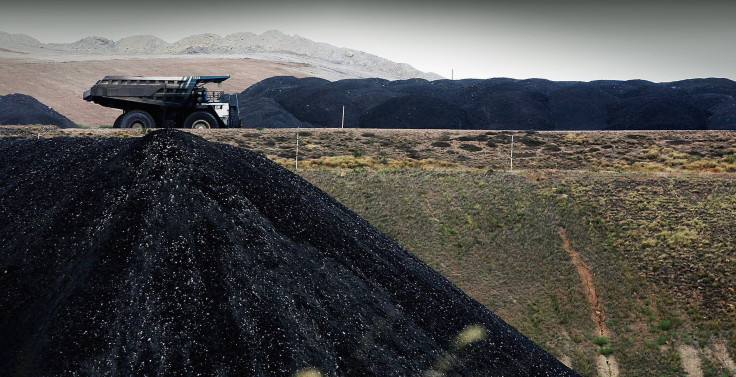Climate Change: Companies Urged To Disclose More Risks After Landmark Paris Deal

In the run-up to the Paris climate change talks, BHP Billiton Ltd., one of the world’s largest coal miners, warned its investors about how a global deal to curb emissions would affect its portfolio. The Anglo-Australian mining giant explained the switch to lower-carbon, natural gas and renewable energy supplies could hamper demand for coal in power plants. The company’s oil business could also take a hit from the growing fleet of more fuel-efficient cars and alternative vehicles.
“We believe investors will be able to decide how well BHP Billiton is equipped to manage climate risk,” Dean Dalla Valle, the company’s chief commercial officer, said during the report’s Sept. 29 release. “More disclosure will allow investors, policymakers and regulators to make more informed decisions.”
BHP's special report was a rare attempt by a corporation to pinpoint its vulnerabilities to the global shift away from high-carbon fossil fuels and toward cleaner alternatives. Yet the majority of companies -- from oil drillers to coal miners to steel producers and other energy-intensive businesses -- don’t provide their investors with a similar level of detail. Most companies adopt vague boilerplate language about the risks of climate change regulations to their portfolios, if they mention climate change at all.
Global business leaders and shareholder activists say that has to change, especially in light of the landmark climate deal signed in Paris earlier this week. Leaders from nearly 200 nations agreed to limit the rise in global temperatures to “well below” two degrees Celsius (3.6 degrees Fahrenheit) above pre-industrial levels -- a feat that will require shrinking greenhouse gas emissions to nearly zero by 2070.

Fossil fuel producers in particular face the greatest risks to their long-term financial outlooks. As countries adopt limits on carbon emissions and invest more deeply in renewable energy, companies may see the value of their oil, coal and natural gas assets decline. A similar phenomenon of “stranded assets” is happening with oil and gas companies today. As crude oil prices plunge to a seven-year low, drilling companies are being forced to slash spending and shelve long-term exploration projects.
Bank analysts are pushing for clues about how the era of cheaper oil will reshape those companies’ portfolios. On Exxon Mobil Corp.’s third quarter earnings call in October, Paul Cheng, an equity analyst with Barclays Capital Inc., asked Exxon executives to clarify the types of projects the company expected to generate more than a 10 percent return with oil prices below $60 a barrel. Cheng also pressed Chevron Corp. to shed light on the company’s megaproject developments if oil prices remain lower.
“There’s assets being stranded right now. The cause is low oil prices, but investors are arguing the cause increasingly is going to be carbon asset risk,” said Jim Coburn, senior manager of the investor program at Ceres, a coalition of environmentally focused investors.
The effects of climate change itself similarly threaten to cripple businesses. Large agricultural producers are already seeing strains in their supply chains due to record droughts in places like California and India. Electric power companies face billions of dollars in damages from powerful storms that knock out equipment and disrupt service.
But few public firms in the U.S. and worldwide are compelled to disclose those risks in annual reports to shareholders or regulators, Coburn said.
“Investors still have trouble finding comparable information about different companies and how they’re situated,” he said. “If investors had that, they could avoid the riskier companies.”
Ceres and other climate advocacy groups like CDP, formerly the Carbon Disclosure Project, have pushed executives for years to analyze their portfolio risks in a carbon-constrained world, or to outline their plans for adapting to worsening climate effects. The United Nations-led climate agreement is helping to drive a renewed effort to boost climate-risk reporting by companies.
The Financial Stability Board, an international financial watchdog group, earlier this month launched a global task force to develop consistent voluntary guidelines for companies providing information to lenders, insurers, investors and other stakeholders. Michael Bloomberg, the billionaire founder of Bloomberg L.P. and three-term mayor of New York City, will chair the task force.
“It’s critical that industries and investors understand the risks posed by climate change, but currently there is too little transparency about those risks,” Bloomberg said Dec. 4 on the sidelines of the Paris summit. He added the task force will help fill that transparency gap, which “will help make markets more efficient, and economies more stable and resilient.”

In the United States, the Securities and Exchange Commission requires that publicly traded companies inform investors of the risks that climate change -- and climate policies -- may pose to their bottom lines. But the guidance, issued in 2010, serves more as a gentle suggestion rather than a strict mandate, observers say.
About 75 percent of U.S. listed companies ignore the rule completely, Lawrence Taylor, a citizen researcher and database developer, found in a 2013 analysis. From studying the annual reports of nearly 3,900 public companies, he found only 27 percent mentioned “climate change” or “global warming” in their most recent filing.
“Not many companies are using [the guidance], and the SEC commissioners are not exactly enthusiastically policing that,” said Nigel Topping, executive director of CDP and the CEO of We Mean Business, a coalition of sustainability oriented investor and business groups.
A group of U.S. senators and representatives are pushing the SEC regulators to take a tougher stance on climate disclosures. In an Oct. 29 letter, the group of mostly Democratic policymakers urged SEC Chair Mary Jo White to request an update on the commission’s efforts to implement its 5-year-old climate change guidance.
“Our markets work best when investors have access to reliable information, and we should have every confidence that the SEC is robustly enforcing the disclosure regulations on the books,” Sen. Jack Reed, D-RI and a senior member of the Senate Banking Committee, said in a statement.

Yet even more stringent enforcement has its limits, at least in the case of Peabody Energy.
New York Attorney General Eric Schneiderman, a Democrat, said on Nov. 9 that the St. Louis coal miner violated New York’s state laws by misleading the public and investors about how climate change and carbon regulations could affect the company.
Peabody, for instance, predicted that “aggressive” regulations for existing U.S. power plants could cut into its coal sales by 33 percent or more -- information that the coal company kept private, according to Schneiderman’s office.
As part of an agreement with Peabody, the attorney general said Peabody would file new SEC disclosures that “accurately and objectively represent” climate risks. But on Dec. 14, when Peabody announced plans to raise $1 billion from investors, the company still didn’t explicitly mention climate change or emissions-cutting policies as investment risks, ClimateWire reported this week.
The company did reference other documents that disclosed Peabody’s climate-related risks in line with the New York settlement. And in the 205-page filing, Peabody listed competition from natural gas and renewable energy as risk factors and once mentioned “environmental” regulations. References to climate change, global warming, carbon dioxide or greenhouse gas emissions didn’t make the cut.
© Copyright IBTimes 2024. All rights reserved.





















